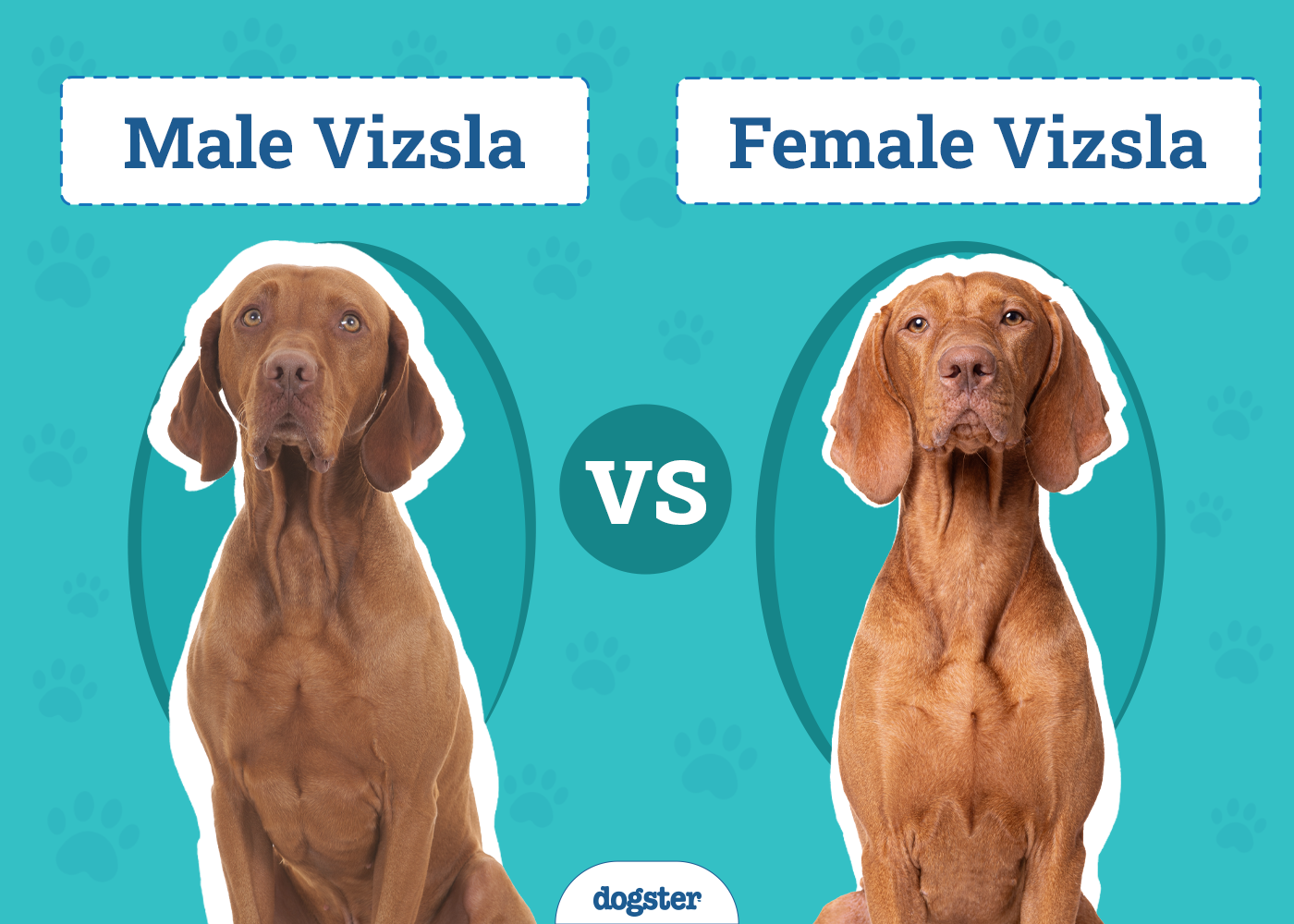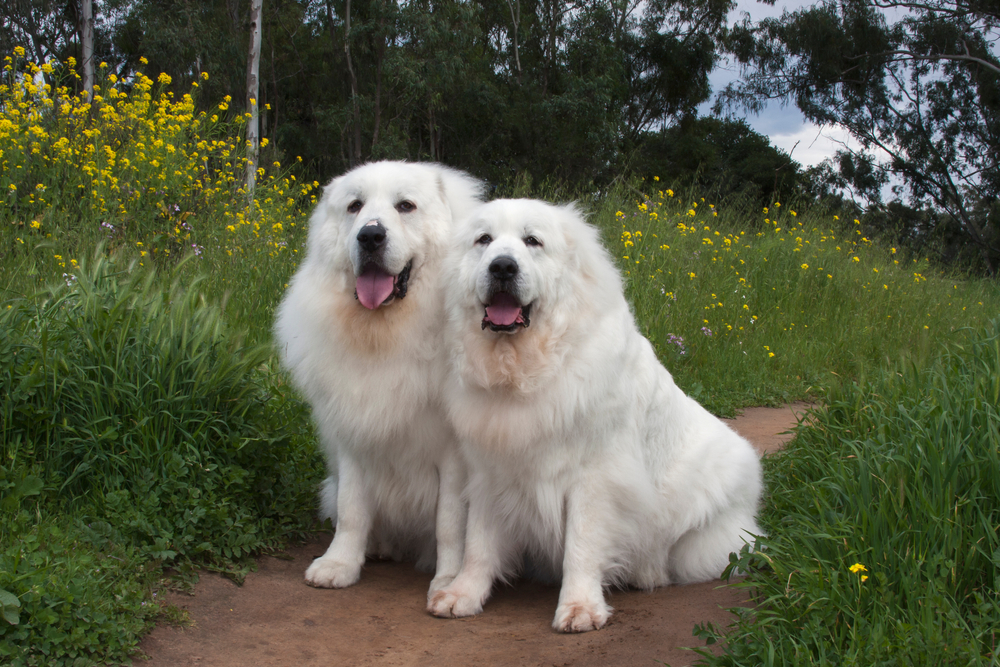Click to Skip Ahead
Choosing to bring a Vizsla into your home will bring you endless joy. Their energy and loyalty make them the perfect canine companion for active individuals and families alike. But before you welcome your new family member, you may be tossing up one more question: do I get a male or a female Vizsla?
While each Vizsla will display its own unique personality, there are subtle differences between males and females. These differences are driven by fundamental biological differences between a male dog and a female dog, but keep in mind they are broad generalizations. Each dog’s behavior reflects their genetics and training, not their sex.
Visual Differences
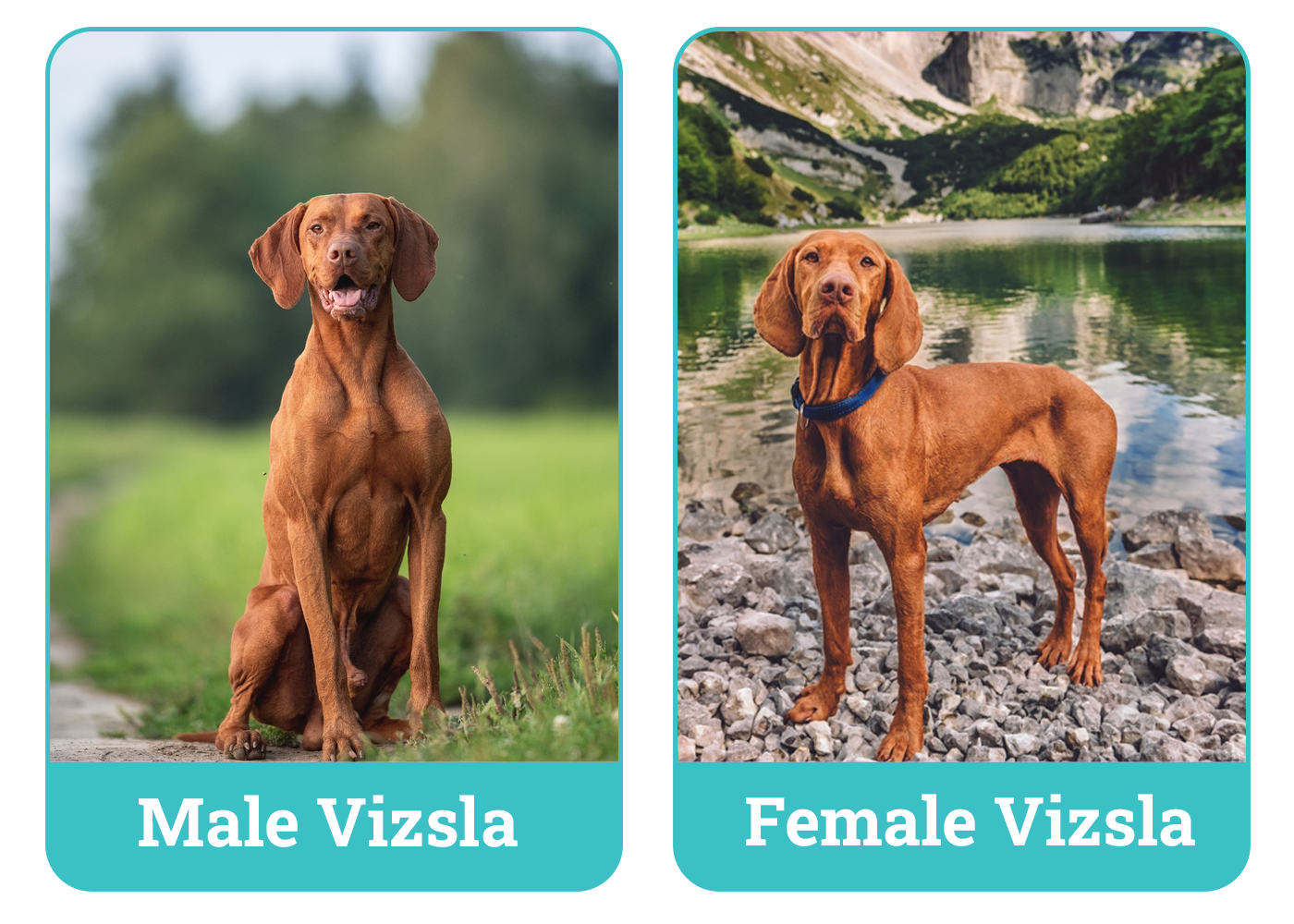
At a Glance
- Average height (adult): 20–24 inches
- Average weight (adult): 50–65 pounds
- Average height (adult): 20–22 inches
- Average weight (adult): 45–55 pounds
Vizsla 101

Vizslas are one of the best all-around hunting dogs. They make great trackers, pointers, and retrievers, making them great companions for various types of hunting. In addition to this natural hunting instinct, they have high levels of energy that will keep them going for hours on end.
They also make great pets for families who don’t hunt if they get plenty of opportunities to burn this energy. To keep them happy, they need lots of physical and mental stimulation; otherwise, they can display behavioral problems in the home.
Active owners will suit the company of a Vizsla. They are not dogs that will be suited for apartment living. Regular walks, in addition to off-leash adventure time, are needed to keep an active Vizsla satisfied.
Vizslas are incredibly loyal and will form close bonds with their families. This trait makes them an excellent guard dog for the family home but means they are more prone to developing separation anxiety.
Luckily, they take well to the company of other pets. With proper socialization, they can get along very well with other dogs and small animals in the home. They are also tolerant of children but may be overly boisterous for small kids, who may find themselves in the path of an excited Vizsla.
Eager to please and exceptionally intelligent, training a Vizsla basic commands is a breeze. They will grasp simple obedience quickly and be happy to take on some more challenging training.
Male Vizsla Overview

Personality / Character
Male Vizslas tend to be friendlier than their female counterparts. They will happily approach anyone and are less likely to get overly attached to just one family member. This means they will suffer less from separation anxiety as they can get their social needs filled by multiple people. Other family members won’t feel left out as a male Vizsla will spread their love evenly.
Male Vizslas tend to be more attention-seeking, relying on their owner for the company a lot more. You may find your male Vizsla needs to escort you around the house to ensure you do not get out of his sight!
Training
Male Vizslas are eager to please, so they will love to engage in training sessions with you. They are easily distracted, though, so some effort and creativity may be needed to keep them focused on the task at hand. When used for hunting, this may cause an issue as their mind may wander when at work, particularly during adolescence. It can be overcome with regular and consistent training.
Health & Care
Male Vizslas will have similar potential health concerns as the males of many other dog breeds. Male Vizslas that are left intact are at higher risk of prostate and testicular cancers. If de-sexed, the lower testosterone may very slightly increase the risk of other cancers in the body.
Due to being slightly larger, a male Vizsla may require more food, particularly to fuel periods of growth.
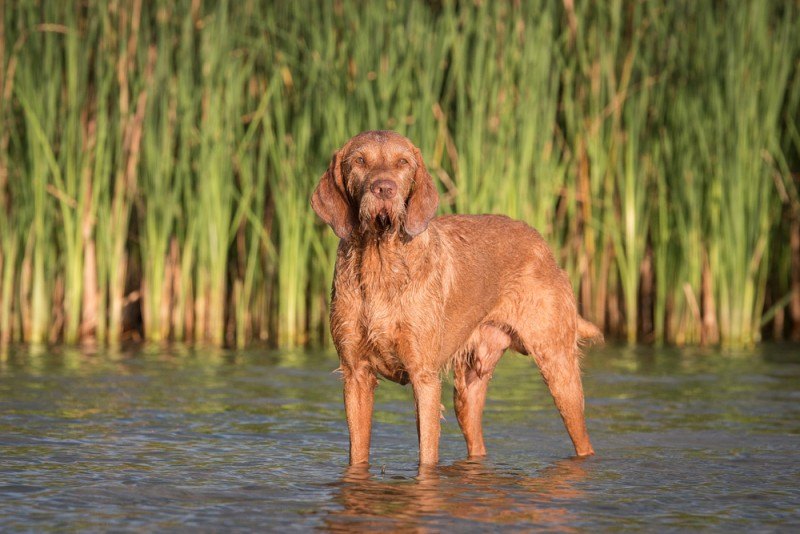
Breeding
If you de-sex your Vizsla, then concerns around breeding will no longer apply to them. If they remain intact, expect their behavior to be affected. Intact males may be more territorial and aggressive. Territorial males are prone to marking behaviors around the home.
Negative breeding behaviors will be more prominent if there are other intact males for your dog to compete with. If your intact male Vizsla is exposed to a female dog on heat, the worst behavior will be displayed. This will cause their hormones to take over, and they will act of character as they become desperate to breed. They may become defiant, aggressive, and prone to running away.
Dealing with the erratic behaviors of an intact male can be challenging. If you do not intend to breed your Vizsla, it may be in your best interest to get them desexed.
- Eager to please
- Won’t choose favorites
- Stubborn
- Boisterous
Female Vizsla Overview

Personality / Character
In general, female Vizslas are more independent than males. They will happily do their own thing as long as you are nearby, and they do not rely on you for constant attention.
Female Vizslas are friendly with those who are familiar but may be more suspicious of strangers. With correct socialization, this can be a benefit, not a problem. Harnessing this suspicion will make them better guard dogs as they will not like strangers in their territory and will alert you if anything is amiss.
Due to their cycling hormones, a female Vizslas mood may vary, she may become sulky or when faced with things she does not like. Overall, a female will have a calmer disposition than the male and be more gentle around children.
Training
Experienced Vizsla owners will often say that females can be slightly easier than males to train. They tend to be less dominant than males, so they will let you take the lead. It is also easier to hold the attention of the calmer female, so you may have more success with longer training sessions.
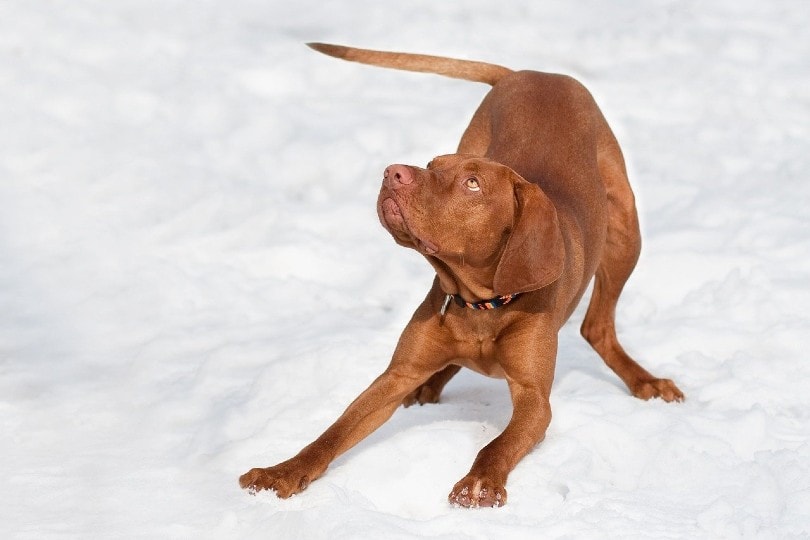
Health & Care
Intact females will require special care when they are in estrus or “on heat”. They may need more food in reproductive primes and be kept separate from other dogs. Females left intact will also be at higher risk of contracting ovarian and mammary cancers. For this reason, spayed females may have a longer lifespan than neutered males.
Breeding
Again, if you plan to de-sex your dog, then breeding behaviors will have little effect on your dog. If you keep your female Vizsla intact, then you should expect her to go through at least two heat cycles in a year. She will be receptive to any intact male during this time, so she must be separated and kept secure to ensure no accidental litters.
This reproductive behavior will affect how she interacts with other dogs. She may be more aggressive to females, viewing them as competition, and her presence will cause male dogs nearby to become aggressive.
Because the spaying procedure is more complicated than neutering, desexing is more expensive and riskier for females than males.
- Better guard dog
- Independent
- Gentle with children
- Suspicious of strangers
- Moody
Which Sex Is Right for You?
In a nutshell, whether you choose a male or a female, Vizsla won’t make any massive difference, as they both will display extremely lovable and active traits. They both will make good family pets, avid hunters, and enthusiastic adventurers.
Those who will keep their dog intact, perhaps for future breeding or just personal choice, may lean towards a male Vizsla. Intact males tend to be much easier to manage than females as they do not experience cycles, so care is the same all year round.
While both have nervous tenacities, females are more prone to anxiety, so they are best suited for owners who will not leave them alone for long periods. Take note that the male Vizsla does not like this either but may be more adaptable to certain circumstances.
Each characteristic and trait we’ve described in this guide is not a sure thing; either sex may display any of these traits. So, rather than focus on gender, you may wish to prioritize the genetics and temperament of any potential dog. If you can meet the dogs that parent your prospective puppy, this is a great time to get some insight into what your Vizsla may be like as an adult.
With good genetics, consistent training, and lots of love, your Vizsla will be a well-adjusted and much-loved addition to your home!
Related Reads:
- How Much Exercise Does My Vizsla Need? Vet Reviewed Facts & FAQ
- Best Collars for Vizslas: Reviews & Top Picks
Featured Image Credit: Vizslafotozas, Pixabay (top); photohun, Pixabay (bottom)

